In the heart of the Kii Peninsula, hidden in the mountains there is one of the most authentic and traditional places in Japan. Koyasan is one of those villages where one can imagine movies being filmed. With more than a hundred temples, it is one of the places where anyone can live the real rural and spiritual Japanese experience. Its complex location makes it very difficult to be accessed by public transport. Overall it makes it an ideal place for photography. Keep reading to discover the best locations an opportunities in the Koyasan photography guide.
Access
Before going deep into the photographic opportunities of this amazing location, I think it is important to explain how one gets to Koyasan. Most places in Japan are very easy to access. High-speed trains are everywhere, and in those locations that can’t be reached with high-speed trains, there are plenty of other options. Even visiting places like Mt. Fuji is a piece of cake compared to visiting Koyasan.
Unless you rent a car, you will use 3 different ways of transportation to get there: train, cable car and bus. If you have a JR Pass and want to make the most out of it (like me), you will use more than a train. The two best cities to start your trip towards Koyasan are Osaka and Nara. Google Maps works pretty well, but any route you take will lead you to the Hashimoto Station. From there, you will reach the Gokurakubashi Station, where you will hop off the train and get into the cable car.
It is worth looking around and appreciating how steep the route is. In less than 10 minutes, the landscape changes completely, and you will arrive at the Koyasan Cable Car Station. From there, regular buses will bring you to the village.

PRO TIP:
Koyasan isn’t like other Japanese cities. There are not 24h convenience Stores like 7/11, Lawsons or Family Mart. Moreover, restaurants close very early, as most people sleep in temples, where dinner is usually included. I did not sleep in a temple, I went to an amazing Guesthouse (and the only one in Koyasan). Consider having dinner at the Shunsai Kameia if you are staying at the Guesthouse. Don’t expect English speaking staff, but if you made it to this remote village, it is worth having some traditional experiences. I had an amazing vegan lunch (monk style), at the Chuoshokudo Sanbo.
Without further delay, enjoy my Koyasan photography guide!
Daimon gate to Nyonindo hike
One of the good things about Koyasan is that there are almost no tourists. The other good one is that the tourists that reach the village tend to be respectful and conscious travellers. I was told to do this route on a cold early March morning. I was staying at the opposite side of the village. Thus, I crossed the village when most people were already sleeping. My destination was the Daimon Gate, one of the ways to access Koyasan (mostly by private car).
This amazing gate is well worth visiting, and it is the place where this short hike (45 minutes) begins. After crossing the Daimon gate, at the right side, there is a path that ascends into the mountain. Despite the “beware the bear” signs, no one has seen one in years (or at least this is what a couple of locals told me). It is impossible to get lost, there is only one way, up. During the ascension, there are many toriis, making the walk very pleasant. Although steep, it isn’t a technical walk.
Half-way through the walk, you will reach the top of the mountain. Surrounded by trees, there is a small shrine. During my trip across Japan, I saw hundreds, if not thousands of them, but the location of this one is special. Moreover, the views over the village are impressive, and it is an ideal spot to take some photographs of the city from another angle.
Instead of going back to Daimon gate, keep walking, and start descending towards the Nyonindo Shrine. After a few minutes, you will see the same road that the buses use to connect the cable car station and the village.
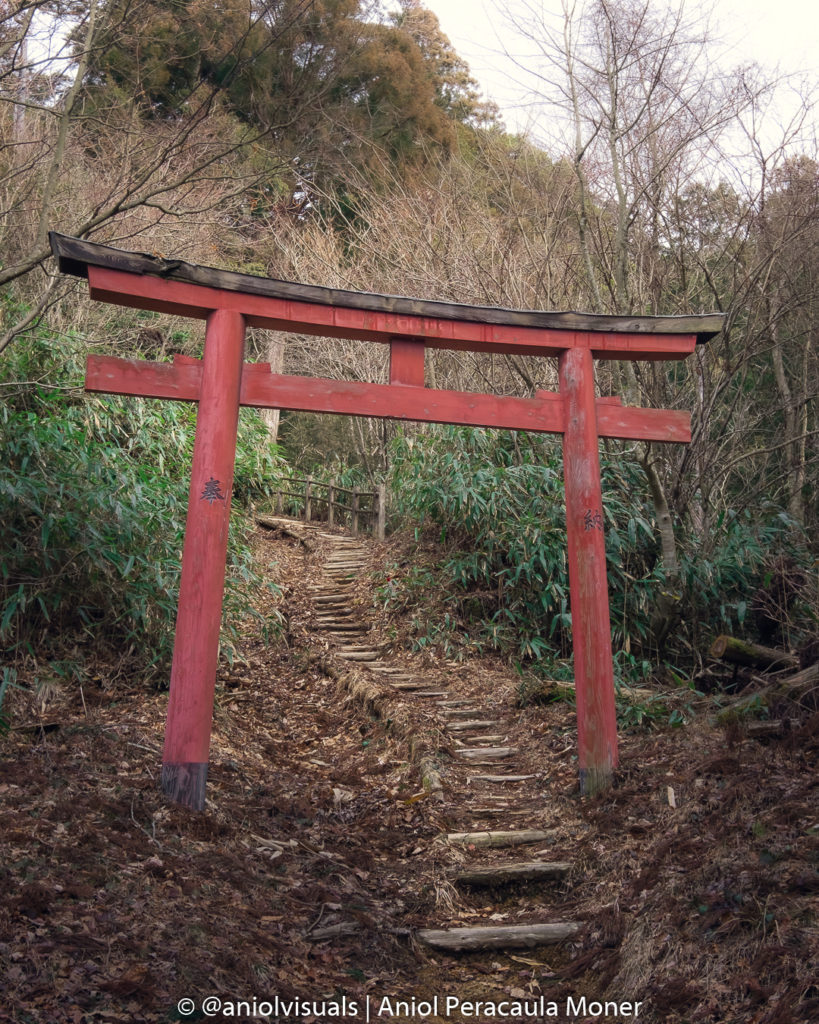


Okunoin Cemetery (day)
The most attractive photographic area in Koyasan is the Okunoin cemetery. No Koyasan photography guide would be complete without it. Therefore, I think it is necessary to distinguish between photographing it with daylight and after dawn. One could spend hours walking through the Okunoin cemetery, taking side routes and exploring it.
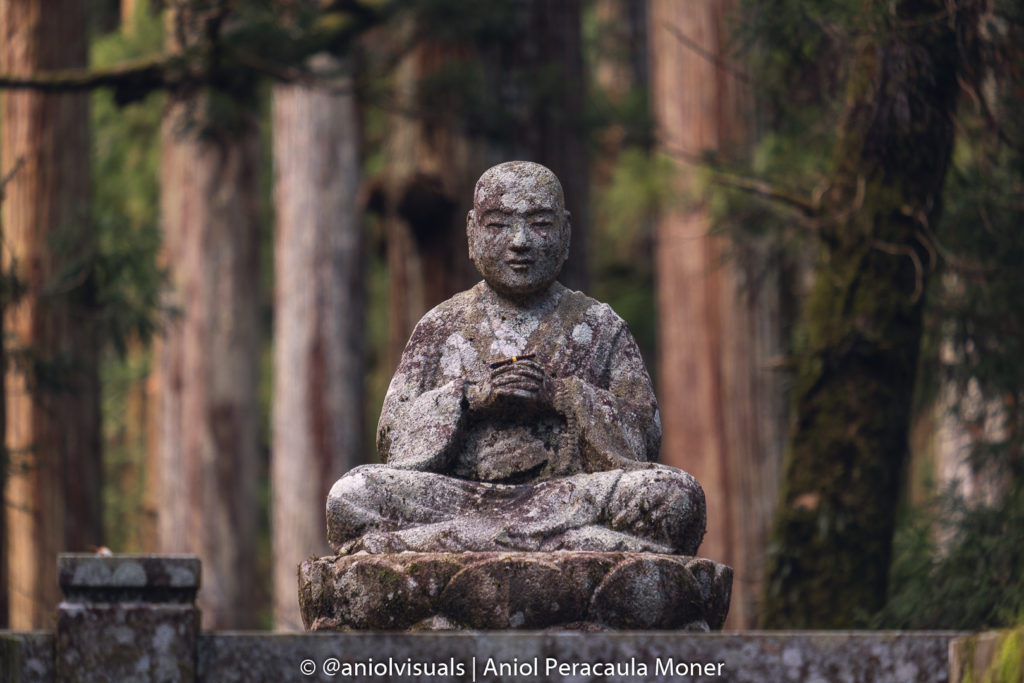
Remember that this is a sacred place. There are lots of people buried and others that visit the cemetery to visit their loved ones. Don’t get close to people that are clearly visiting someone’s grave. I don’t even feel comfortable photographing people there unless it’s in the distance, and when they can’t be recognized.
Even without taking photos of people, lots of faces will appear in your images. The Okunoin Cemetery is nothing like a European or North-American cemetery. There are thousands of little statues, sculptures, some of them decorated, and endless little details that only some trained eyes will see. The composition is very important. Use sculptures, torii gates, and other elements to complete your images. I really enjoyed leaving the main path and exploring some less frequented areas.
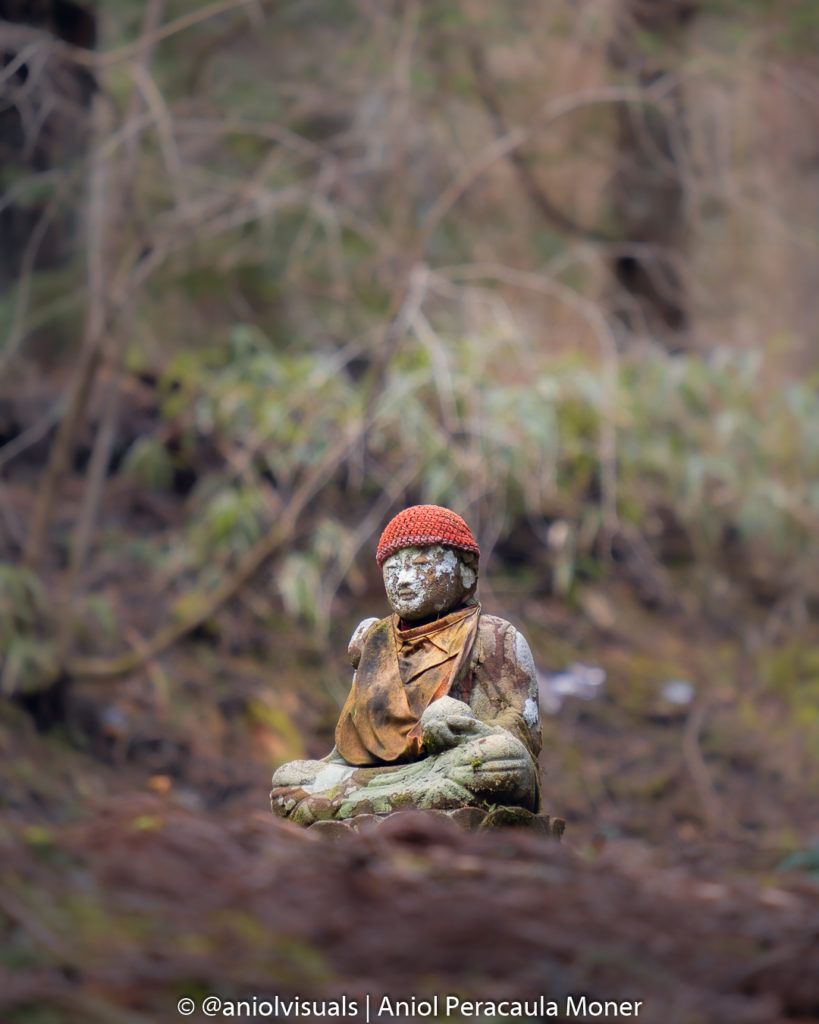

One of the main attractions of the cemetery is the forest where it is located. Some of them have lived up to a century, and are a very interesting photographic element to add in your composition. I used a zoom lens and a wide-angle lens, one for the little details, and the other one for adding the trees to the compositions.
There is only one problem in the Okunoin cemetery. The most beautiful thing in there it’s the Kobo Daishi mausoleum and the 10000 lanterns hall. But it is forbidden to take photos in there. After the bridge you see below, no photos allowed. It’s a sacred area, and although the lantern hall is amazing, it can’t be captured, although if you look online for Torodo Lantern Hall you will find lots of them. Honestly, it is very easy to get images, as no one is there to control this is a personal decision, stick to the rules or not.

Okunoin Cemetery (night)
Daytime at a Japanese Cemetery? Check. Nightime at a Japanese Cemetery? Check. If visiting the Okunoin cemetery with light is interesting, after dawn it becomes one of the most impressive experiences I have ever had. Although It can be a little scary once it is pitch-black. Moreover, if you leave the main path, illuminated by hundreds of little lamps, it is difficult to find the way back. But it is a must to visit it at night.
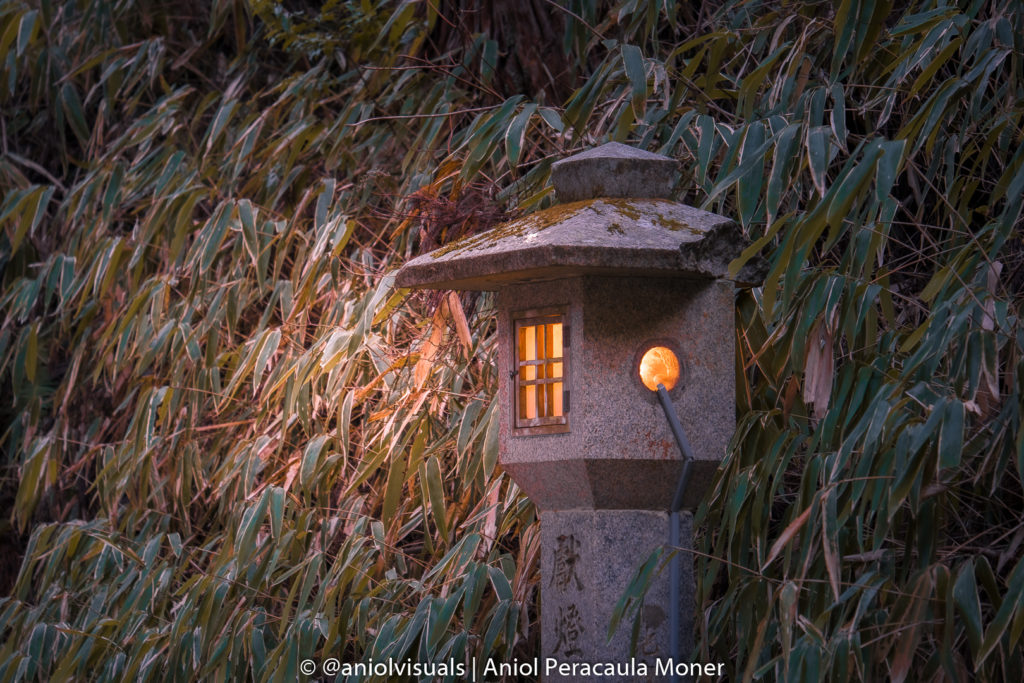
The lamps illuminating the cemetery are now the main light source, and create a mysterious and very photogenic environment. Due to being in a small village, there isn’t light pollution. Therefore, it is possible to capture some stars and add them to your composition. Since the sun sets until night time starts, there are many different things to be done in the Okunoin cemetery
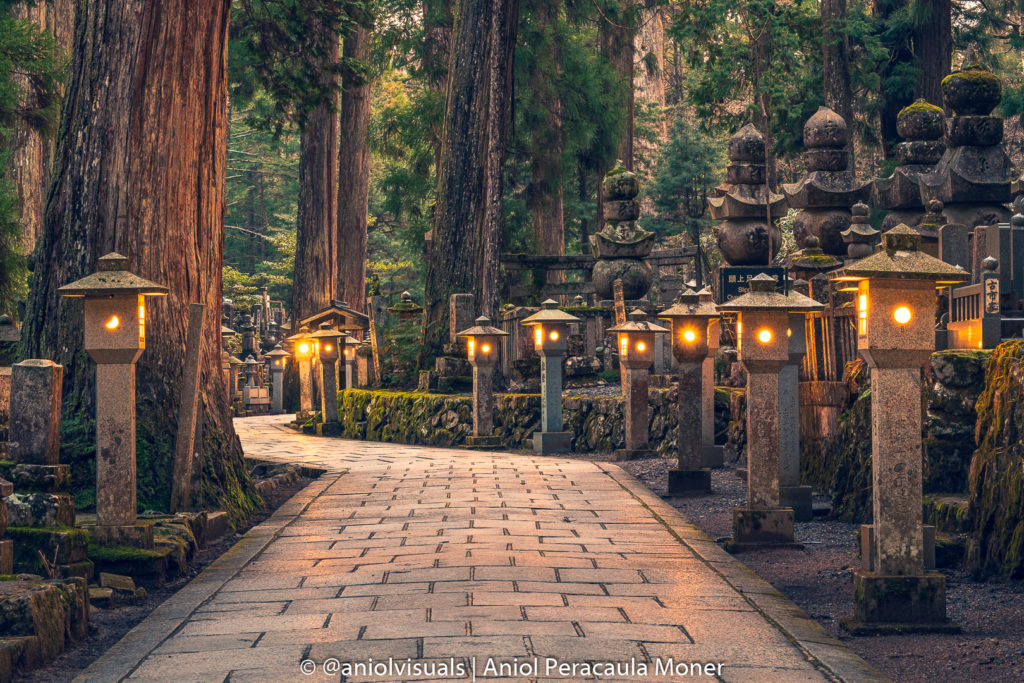
Capture the last beams of light across the trees. If you are lucky, some of them might give natural light to a sculpture, detail…
Wait for the sweet moment when the lamps are on, and the sky isn’t black, the blue hour. I found it to be the best moment to take photos.
Enjoy the silence during nighttime, and use the lamps light and shadows wisely.
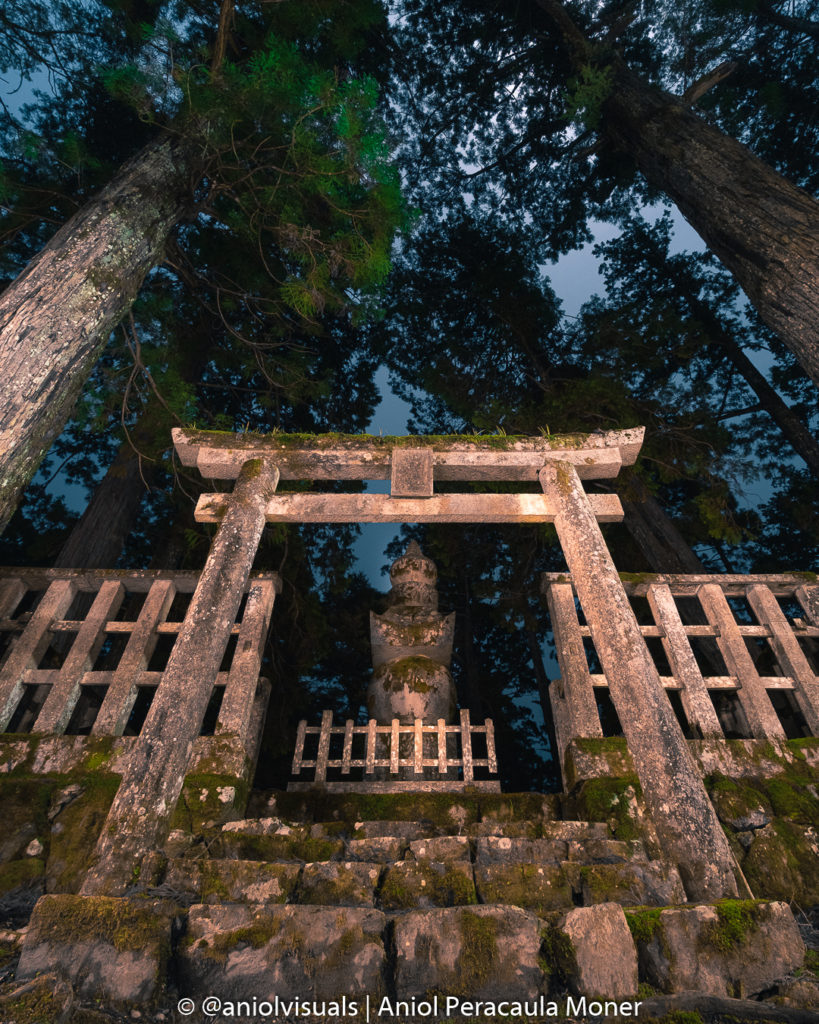

It is possible to visit the cemetery at night with the Monks (a guided tour). If you are interested in the history and curiosities this area hides, it is a very good option. Due to the insane amount of tombs, it is difficult to discover the most historically interesting ones being a tourist. As a photographer, though, sometimes it is more important to choose the right elements. However, there are plenty of signs explaining some stories about the people buried in specific locations.
Temples
The last point in this Koyasan photography guide is temples. There is not enough time to visit all the temples in Koyasan in the average 1-2 days most people spend there. However, some of them are worth visiting or admiring from the outside. Here you have some of the images I took when visiting them. I loved the Kongobuji temple, and of course, you can’t leave without at least walking by the Danjo Garan an impressive complex of temples.
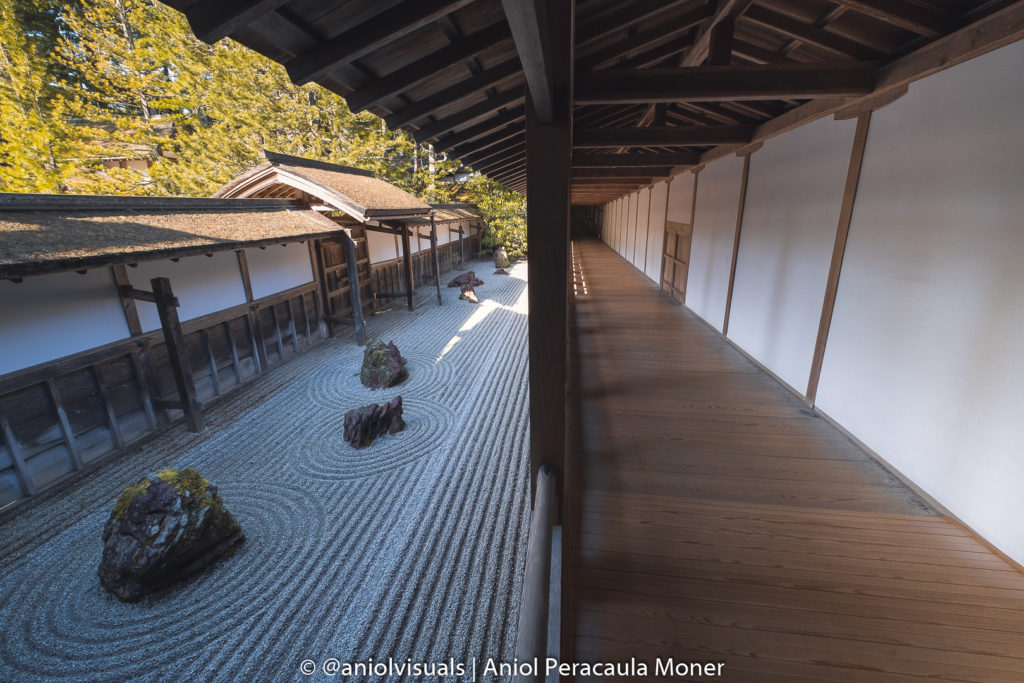

I hope you enjoyed this Koyasan photography guide. Did you like the photos you saw here? Follow me on my Instagram or like my Facebook Page to follow my adventures and get notified whenever I post a new photography guide! If you have any questions or would like to purchase my images for your personal or professional use please contact me at aniolvisuals@gmail.com or using the contact form available in the Contact section.
No post found!